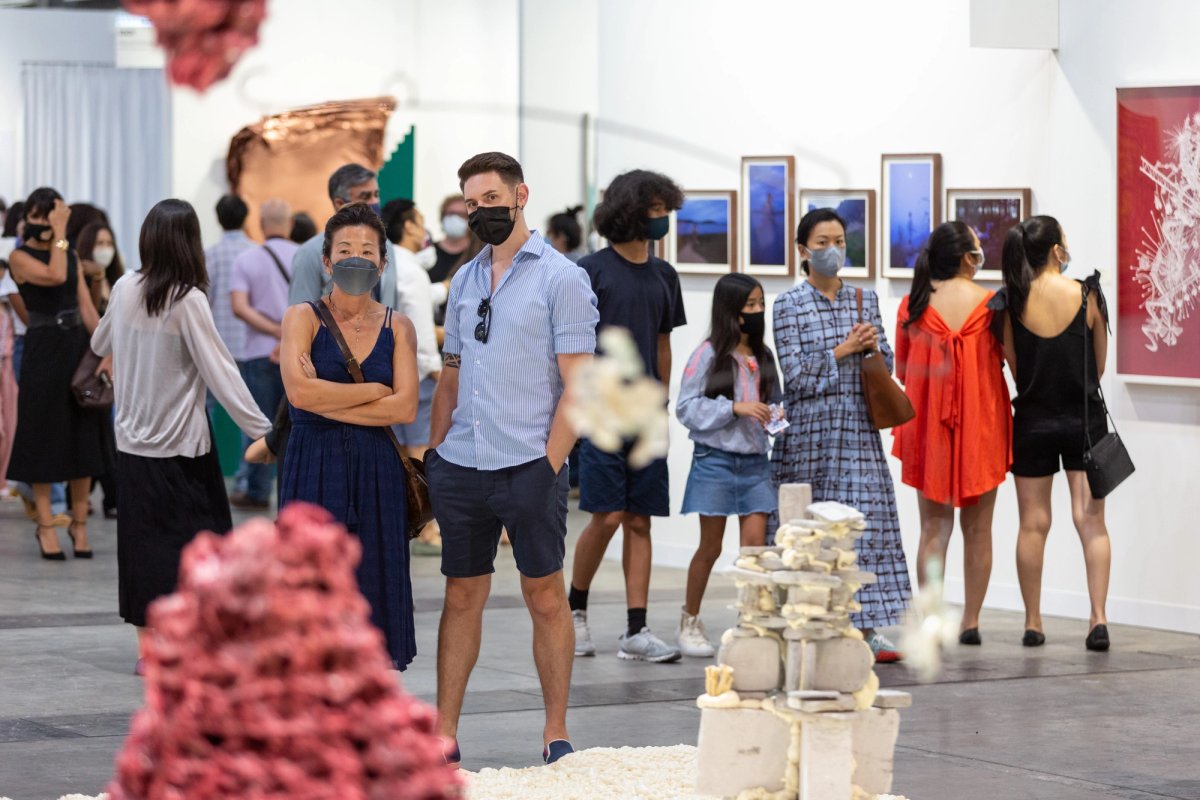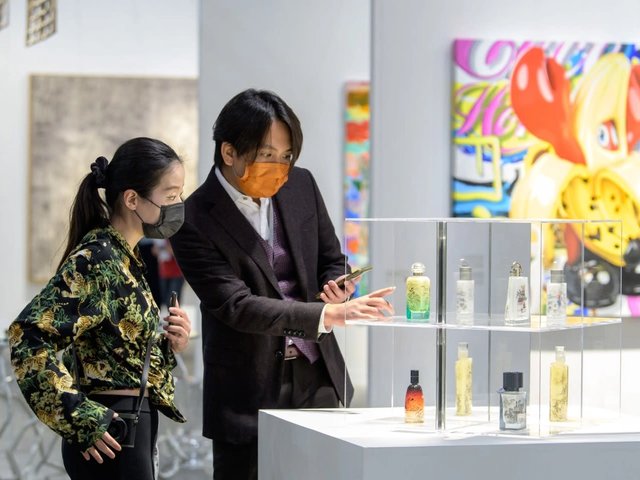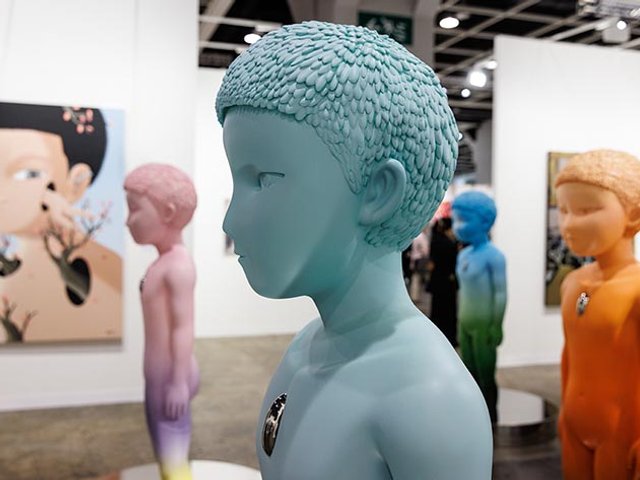A radically altered but still lively Art Basel in Hong Kong (ABHK) kicked off on Wednesday (until 23 May), with VIP visitors reaching full Covid capacity, limited to 75% of regular visitors, on the opening day. Turnout was bolstered by the Buddha’s Birthday holiday in the city. “Hong Kong is a small city, and [the Covid era] has the benefit that collectors are here, and not traveling like many would be in usual times,” says Henrietta Tsui-Leung, the co-founder of Hong Kong-based gallery Ora-Ora, showing six artists including Mai Miyake and Peng Jian at the fair.
“It’s nothing like normal, [but] what’s important is to have the core people there,” Art Basel's global director Marc Spiegler says, speaking by phone from Switzerland. “We can’t have the same numbers at the opening, so it’s not crowded compared with last time, in order to stay within the [Covid] controls. It’s just that people are now not used to being in big crowds.”
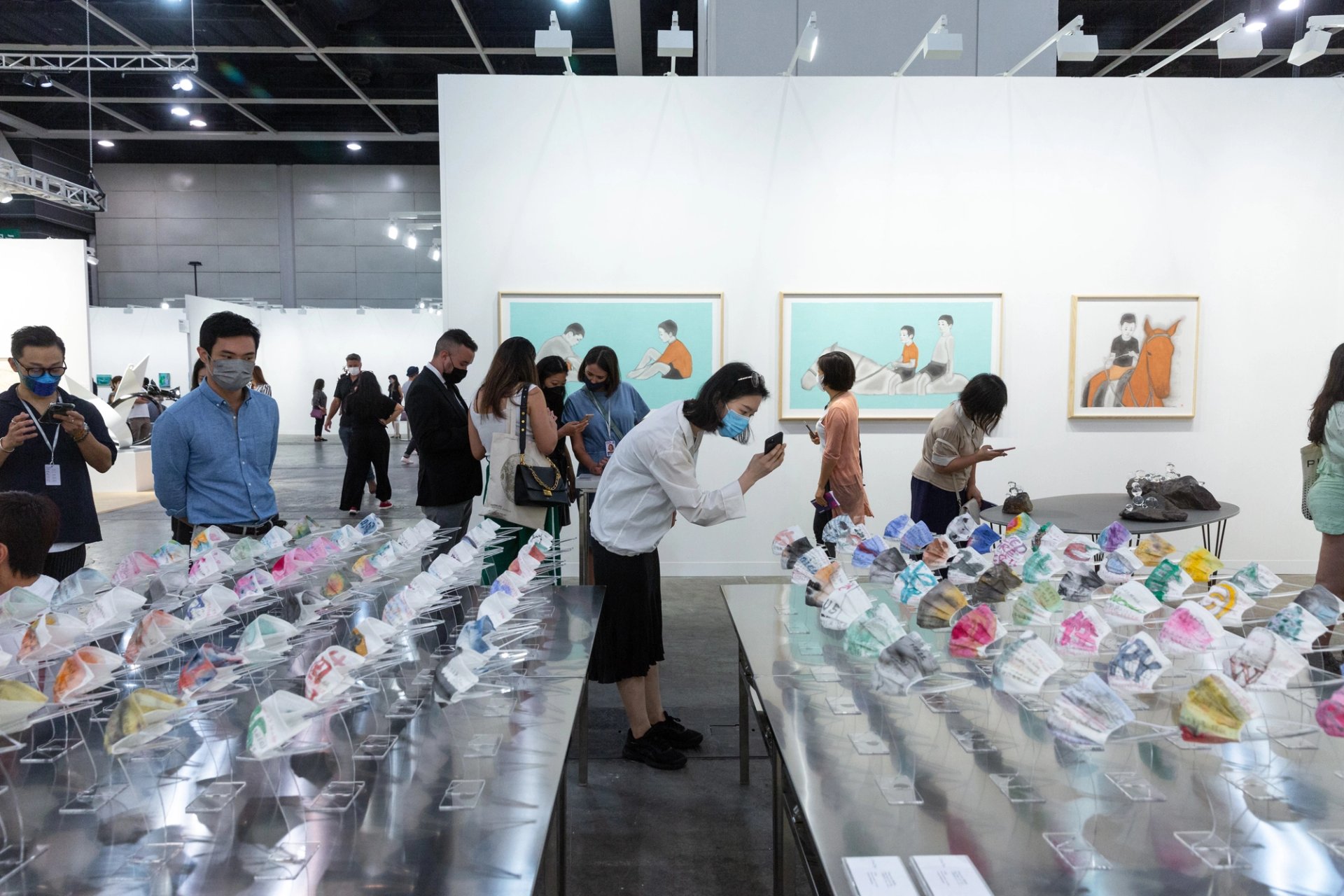
Ora-Ora at Art Basel in Hong Kong 2021 © Art Basel
Hong Kong can now boast zero community transmissions of Covid-19, but protective measures remain in place, including 21-day quarantines for the few people permitted to enter the territory. Besides the crowd controls and mask mandate; the checking of Hong Kong’s contact tracing app; the lack of congregations above four people; a much grumbled about ban on vendors’ eating at the Hong Kong Convention and Exhibition Centre; and the whittled down size (104 galleries compared with 2019’s 242), the absence of an international presence was the greatest transformation. Over half of the participants from overseas were operating “satellite” or “ghost booths”, run by temporary staff hired by the fair, due to the difficulty of getting into Hong Kong.
“It’s impossible to compare 2019 and 2021, it’s a completely different world. We’re happy about the numbers of galleries and people that came, and the sales both online and in-person,” Spiegler says. “Fundamentally, galleries feel that they are selling well, which is important. This is the first step, in exploring the hybrid model, and bringing back the cultural vibrancy of Hong Kong.”
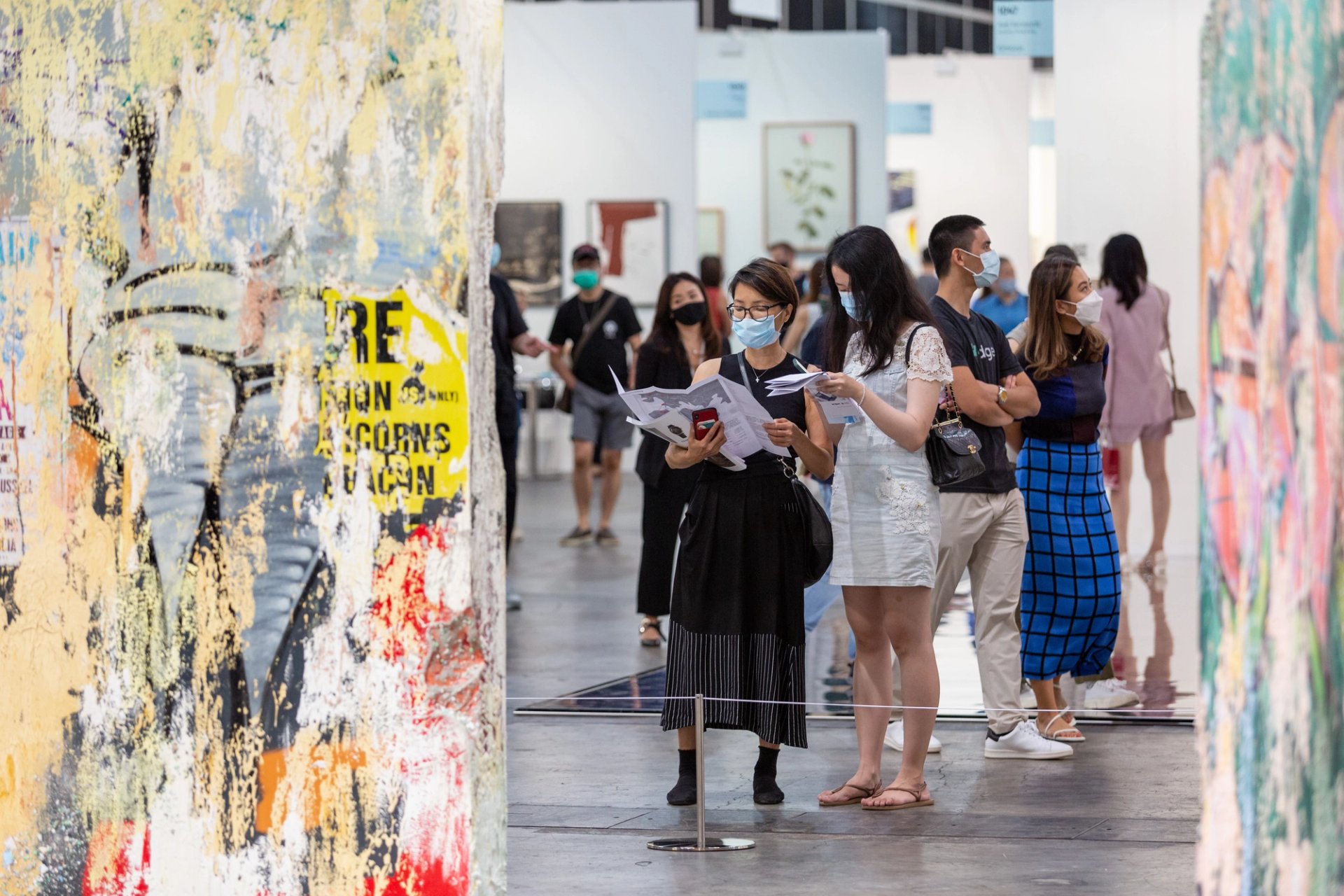
“It’s nothing like normal, [but] what’s important is to have the core people there,” Art Basel's global director Marc Spiegler says © Art Basel
Big galleries are reporting plenty of the usual hefty sales, such as Joan Mitchell’s 1962 12 Hawks at 3 O'Clock at Lévy Gorvy gallery, which sold for around $19.5m. The gallery also sold works by Pat Steir, Tu Hongtao and Michael Lau on the opening day. Hauser & Wirth sold George Condo’s Blues in A Flat (2021) for $1.75m and Haunted by Demons (2020) for $800,000, as well as Rashid Johnson’s Untitled Broken Crowd (2021) for $595,000 to Shanghai’s Long Museum. Seoul-based Kukje gallery sold Le Ufan’s Dialogue (2020) for “in the range of $400,000-$450,000” and Park Seo-Bo’s Ecriture No. 970428 for “in the range of $250,000-$280,000”.
Hong Kong-based galleries are likewise ebullient at the focus put on the city’s art scene this year, including a poster campaign for the fair shot by the local artist Stanley Wong (aka Anothermountainman) of 26 art world figures including gallerists Tsui-Leung, Anthony Tao and Amanda Hon, writer Vivienne Chow, and artists Yuk King Tan and Andrew Luk. Luk’s installation, in a focal spot of the fair floor, sold to Adrian Cheng’s K11 Foundation via de Sarthe Gallery, says its director Willem Molesworth, who also sold a work by the mainland collective Double Fly Art Center for $18,000. Another local gallery, Blindspot, saw works by Sarah Lai, Trevor Yeung and Sin Wai Kin (fka Victoria Sin) sell for between $5,000-$30,000, plus Lam Tung Pang’s Meaningless No.12 (2020) for $60,000-$70,000.
“We were not censored [this year], and we’ve never been censored [in Hong Kong]”Marc Spiegler, Art Basel's global director
ABHK this year shares the convention centre with the Art Central fair (20-23 May) as well as a section for Fine Art Asia fair, which included an ABHK pop-up in its 2020 edition last November. Art Central highlights include Chan Wai Lap’s project The Lonesome Changing Room, exploring nostalgia and identity by recalling Hong Kong’s iconic public swimming pools. “Art Central is fun and energetic, both young and old,” Tsui-Leung says. “People have been researching quickly. I sold to some collectors in their 20s, and I can’t say they are knowledgeable but they are abreast of trends—like NFTs, good figurative art and bad figurative art,” she adds
Mainland gallerists with "ghost booths" in Hong Kong gave mixed reports: those able to get at least one regular staff member to Hong Kong claim to be doing brisk sales, while those entirely reliant on temporary staff aptly describe business as ghostly.
Ultimately, this Hong Kong art week is local galleries’ and artists’ time to shine. “Now people are more interested in, and value, Hong Kong art, the themes are becoming more subversive,” says one dealer, speaking anonymously. This ABHK may prove a last hurrah, as censorship in the purportedly autonomous city is on the rise. “Hong Kong artists are largely planning their emigration, they’re leaving or have left. Artist-wise it is very difficult. Now we have to talk like we’re in [mainland] China.”
“We were not censored [this year], and we’ve never been censored” in Hong Kong, Spiegler emphasises. This fair edition “has shown the strength of Hong Kong as a city, its galleries, collectors and artists—that it has come together under the worst of conditions. It is essentially a closed city, with three weeks quarantine, so a lot sat it out, but hundreds or thousands are following the livestreams, Instagram, and Wechat and experiencing an enormous collective feeling of FOMO: we are all wishing we were there now.”


